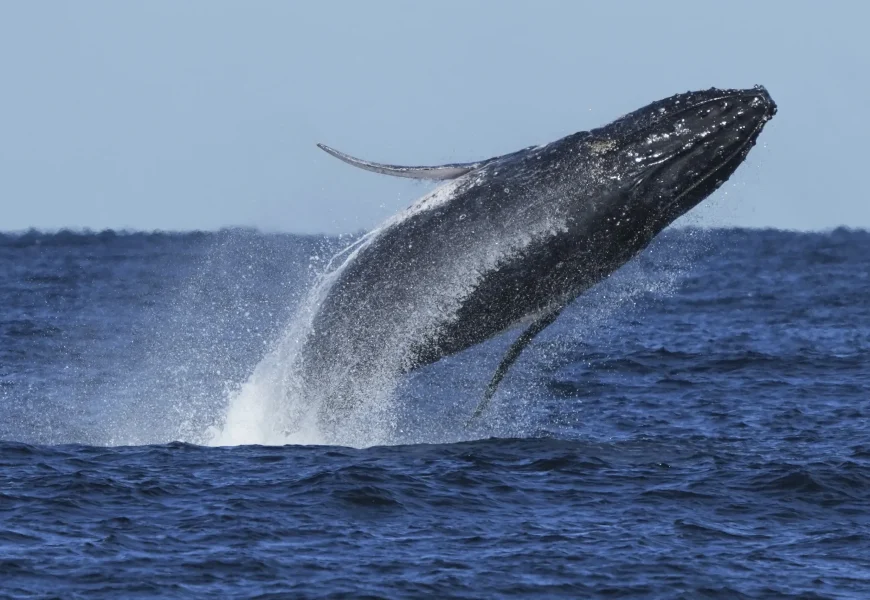PORT STEPHENS, Australia (AP) – The ferry was late, but not because of the usual traffic. Sydney commuters watched from an idling boat this month as humpback whales the size of buses surfaced nearby, halting the vessel’s passage across the harbor. The curious mammals seemed to be watching them back.
Commuter traffic gives way for whales on Australia’s humpback highway
PORT STEPHENS, Australia (AP) – The ferry was late, but not because of the usual traffic. Sydney commuters watched from an idling boat this month as humpback whales the size of buses surfaced nearby, halting the vessel’s passage across the harbor. The curious mammals seemed to be watching them back.
In June and July, it’s not uncommon for whales to stop water traffic in Sydney. Winter heralds the opening of the so-called humpback highway, a migratory corridor along Australia’s east coast used by about 40,000 of the massive creatures as they travel from feeding grounds in freezing Antarctica to tropical breeding areas off Queensland state.
“It’s blubber to blubber,” said Dr. Vanessa Pirotta, a wildlife scientist at Macquarie University in Sydney and author of the book “Humpback Highway.” During peak traffic periods the bustling coastal city of 5.5 million people becomes one of the world’s few urban centers where you might see a breaching whale on your morning walk, while buying a coffee, or waiting at a bus stop – anyplace you can see the ocean.
The reason humpbacks on the highway are so visible is due to their size – adults can be 16-17 meters (52-56 feet) in length, and weigh 40 tonnes – and their proximity to people. On their 10,000km (6,000 mile) journey from icy to balmy waters, one of the world’s longest mammal migrations, the creatures stay close to shore.


